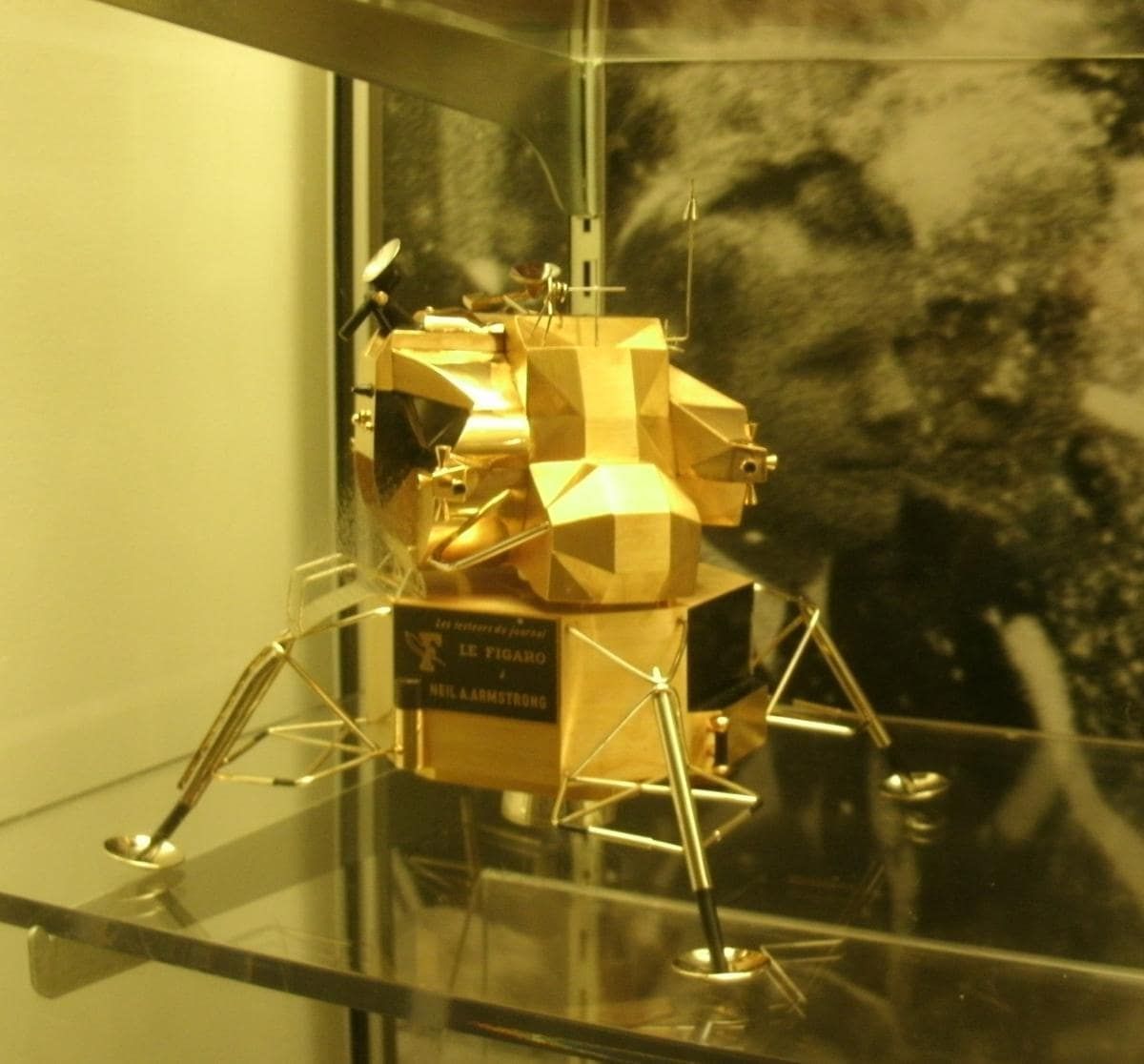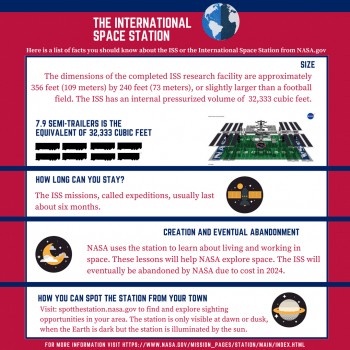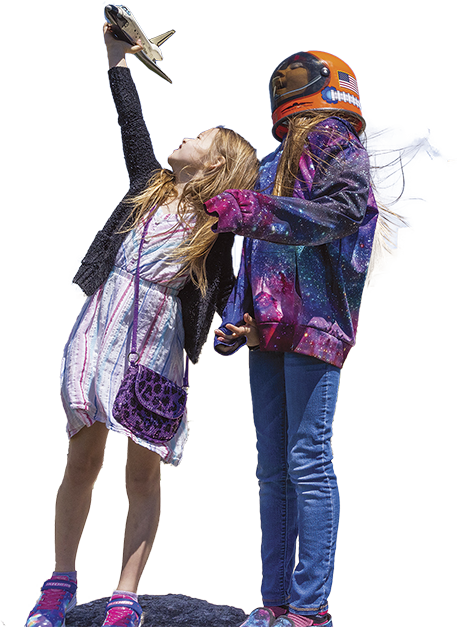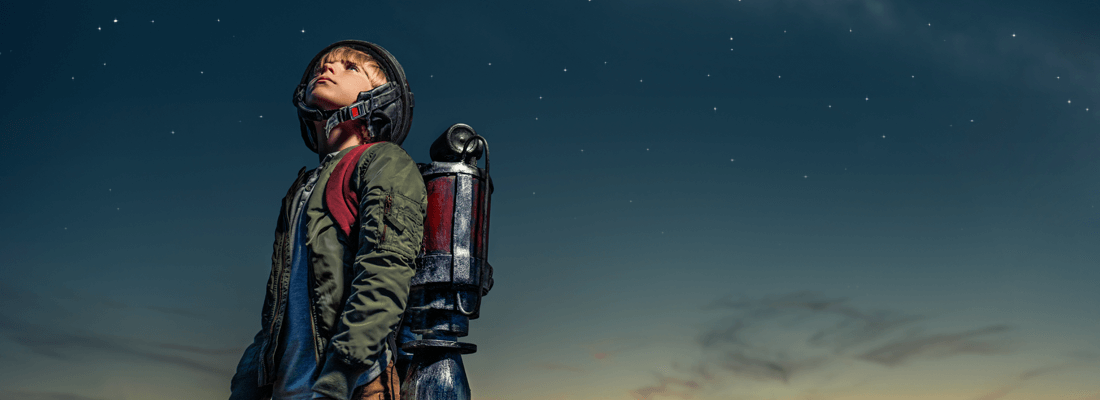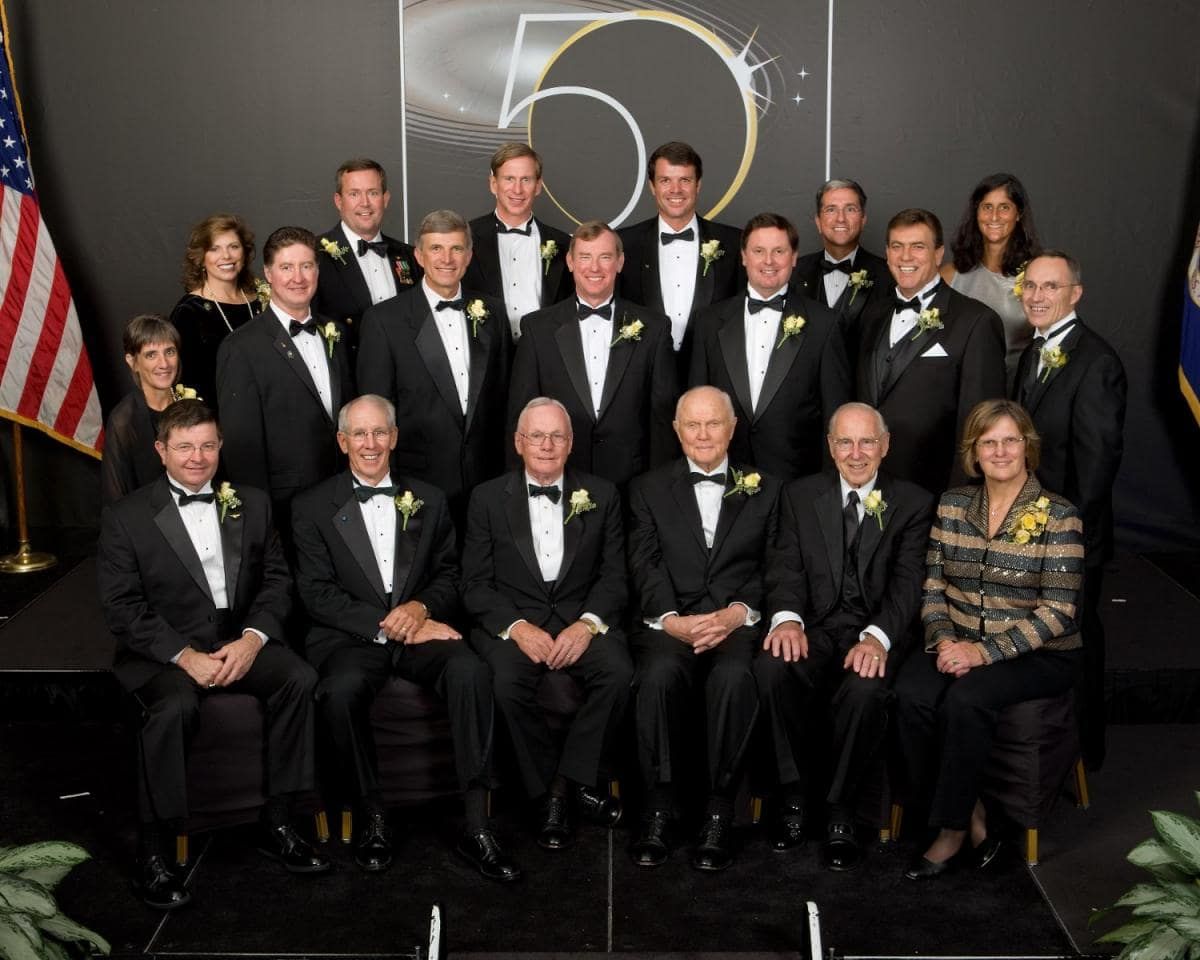Article
10 Interesting Facts About Apollo 13
By: Logan Rex | April 10, 2025
Wapakoneta, OH — Apollo 13 has long been one of NASA's most dramatic missions. What was supposed to be America's third lunar landing mission quickly turned into a captivating chronicle of ingenuity, teamwork, and perseverance. From iconic phrases to little-known facts about the mission and crew, here are 10 interesting facts that dig a little deeper into NASA's "finest hour."
The crew was originally scheduled for Apollo 14
Originally, the Apollo 13 crew members were in rotation to fly on Apollo 14. Jim Lovell, Fred Haise, and Bill Anders served as the backup crew to Apollo 11, which put them in the crew rotation as the prime crew for Apollo 14. In early 1969, Bill Anders accepted a position as the executive secretary for the National Aeronautics and Space Council (NASC) and planned on retiring as an astronaut that coming August. Rookie Fred Haise was brought up from the support crew to train alongside Anders in case the mission ran past the August retirement date.
Mercury Seven astronaut Alan Shepard had returned to flight status after surgery for Ménière's disease, an inner ear condition that previously grounded him. Although Shepard was eager to return to space, officials at NASA were apprehensive that he hadn't had enough time to properly train for an Apollo mission. As a result, the crews were swapped, and Lovell and his crew were bumped up to the ill-fated Apollo 13 slot.
Jim Lovell was considered for the Apollo 11 mission
In Neil Armstrong's autobiography, First Man, the Apollo 11 commander described how Deke Slayton approached him on December 23, 1968 and asked about having Michael Collins and Buzz Aldrin as his crew. Armstrong felt that the selection was appropriate and that the three worked well together. Slayton then, more directly, asked if he was okay with Aldrin on the crew, with others saying that Aldrin was a difficult partner to work with. Additionally, Slayton said that he would make Lovell available for Apollo 11 if Armstrong felt that this would be a better fit for the mission.
After a day of contemplation, Armstrong went back to Slayton and declined the offer, saying that the selection of Aldrin and Collins was a suitable fit. Armstrong went on to explain that although Lovell would have worked well with the crew, he also worked fine with Aldrin. Armstrong also felt that Lovell deserved to command an Apollo mission as well.
Ken Mattingly never contracted the German Measles
Roughly a week before the launch, backup Lunar Module Pilot Charlie Duke spent time with a family whose 3-year-old son had developed the German Measles, also known as Rubella. Duke had never come into contact with the virus as a child and had no immunity to the illness. Duke ended up contracting the highly-infectious sickness, also coming into contact with the Apollo 13 prime and backup crews. Both Lovell and Haise were immune to the illness, however Command Module Pilot (CMP) Ken Mattingly was not.
The decision was ultimately made to switch Mattingly with CMP backup Jack Swigert, who also had immunity. Dr. Charles Berry, the Head of Medical Research and Operations in Houston advocated for the switch, citing that with the virus incubation time, Mattingly could develop crippling symptoms like fever, rash, pink eye, and joint pain during lunar orbit, affecting his ability to efficiently carry out his Command Module duties.
The great irony is that Mattingly never ended up contracting the disease and was eventually reassigned to the Apollo 16 mission.
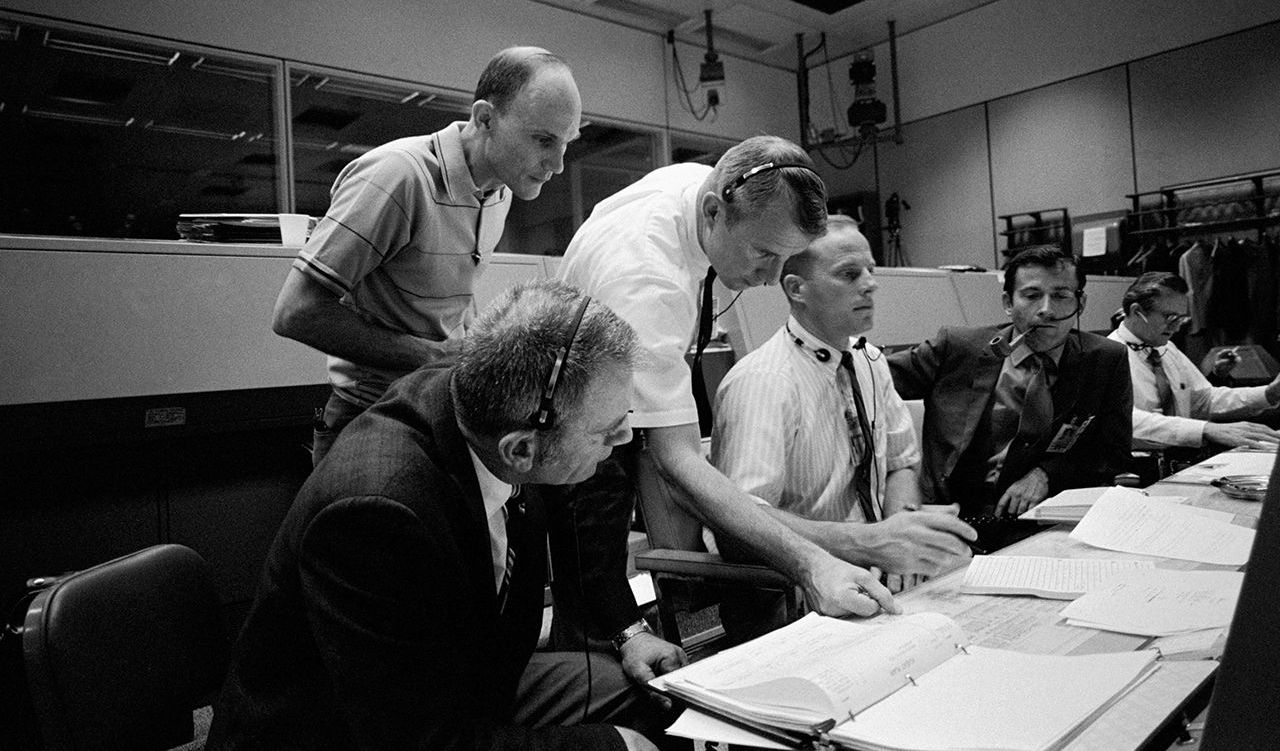
The Apollo 13 Mobile Quarantine Facility is still lost
Used for Apollo missions 11-14, the Mobile Quarantine Facility (MQF) was a specially retrofitted Airstream trailer used by NASA to quarantine astronauts after their lunar landing missions. The goal was to prevent any possible "Moon germs" from escaping and infecting the population. The practice was discontinued after Apollo 14, when none of the missions showed any signs of infection. Each of the missions from Apollo 11-14 had an MQF ready for their return, including Apollo 13. Because the mission never landed on the Moon, their MQF (MQF-001) was not used for this purpose.
After the quarantine protocol was dropped, the Mobile Quarantine Facilities were repurposed and sent to other areas for use. However, after decades of use and relocation, the Apollo 13 MQF was lost in the governmental shuffle. Its last known use was by the USDA, decades ago.
The mission is the farthest human beings have traveled in space
While never landing on the Moon, Apollo 13 does hold the distinction of being the farthest mission humans have ever traveled away from Earth. After the explosion, the crew used the Moon's gravity to slingshot them back to Earth, known as the "free-return trajectory." At their farthest point, the crew was approximately 248,655 miles (400,171.4 km) from our planet.
Although this is the furthest humans have traveled from Earth, NASA's Artemis II mission has plans to break this record, traveling to distances of around 280,000 miles (450,616.3 km). The Artemis II mission will be the first time in over fifty years that humans have traveled outside low-Earth orbit.
Jim Lovell makes a cameo in the "Apollo 13" movie
In 1995, director Ron Howard released the Academy Award winning movie "Apollo 13," based on the events of the mission. Jim Lovell served as a technical consultant on the movie and helped actor Tom Hanks prepare for the role as the Apollo 13 commander. Although critics praise Hanks for his adaptation of Lovell, the real life Jim Lovell originally thought that actor Kevin Costner should play the part.
For his work on the movie, Lovell was given a cameo spot. He played a naval captain for the recovery vessel USS Iwo Jima. Production originally requested that Lovell play the ship admiral, but Lovell declined, stating that he was in real life a naval captain and that he would not portray a character of a higher rank, out of respect for his military position. In the ending of the movie, you can see the real-life Jim Lovell welcome Tom Hanks (Jim Lovell) on board the USS Iwo Jima, giving him a congratulatory salute and handshake.
"Apollo 13" was not the first movie made about the mission
While the 1995 adaptation went on to become one of the highest-grossing space films of the 20th century, it was not the first movie about the incident. In 1974, "Houston, We've Got a Problem" was released as a made-for-television drama film. The movie took more focus on the events of Mission Control on the ground rather than the emergency in space. Much of the plot and scenes were fictitious, making many in the space community discredit the movie as too unrefined and cheap. Jim Lovell even is quoted as describing the movie as purely "fictitious and in poor taste."
Hollywood likes to reword phrases from the mission
Some of the most famous phrases related to space come from Apollo 13. Both "Houston, we have a problem" and "Failure is not an option" originated from the mission. However, both of these phrases were crafted and reshaped by Hollywood. Originally, shortly after the oxygen tank explosion, Jack Swigert radioed Mission Control saying "Houston, we've had a problem here." with CAPCOM Jack Lousma asking to repeat. Lovell responded again, saying, "Houston, we've had a problem." The phrase is close, but not good enough for movie dialogue apparently.
Flight Director Gene Kranz is also attributed with saying "failure is not an option," which he never said during the actual emergency. The phrase comes decades later when writers are working with Kranz on dialogue for the movie. Eventually, Kranz was talking about keeping calm and steady in Mission Control and how they calmly explored options and, "failure was not one of them." The writers knew instantly that the phrase was gold, reworking it into the well-known tagline. Kranz liked the line so much he even made it the title of his 2000 autobiography.
Fred Haise developed a urinary tract infection while returning to Earth
After the emergency, water was rationed for the crew for conservation. Lunar Module Pilot Fred Haise developed a Urinary Tract Infection (UTI) from the rationing and stress from the situation. The infection likely made its way to his kidneys where it spread further. The illness caused him severe flank pain, fever, and lethargy for most of the trip. After the recovery, he was treated with antibiotics and made a full recovery.
Lovell considered asking for another space mission
In interviews, Lovell expressed that he had some interest in going on another mission. In a press conference after the emergency, a reporter asked if he would consider going on another lunar mission. As he was about to answer, he saw his wife, Marilyn, give a confident 'thumbs down' and said that he thought he'd give other astronauts the opportunity. His wife Marilyn had been rightfully traumatized from the near-fatal event and actively supported his retirement from space. To this day, Lovell is the only astronaut to travel to the Moon twice and not land.
Lovell retired from NASA in 1973 and became the CEO of Bay-Houston Towing Company in Houston. He held other commercial positions like president of Fisk Telephone Company and executive vice president for Centel Corporation in Chicago.
If you liked this story, follow for more!
share this
Related Articles
Related Articles
